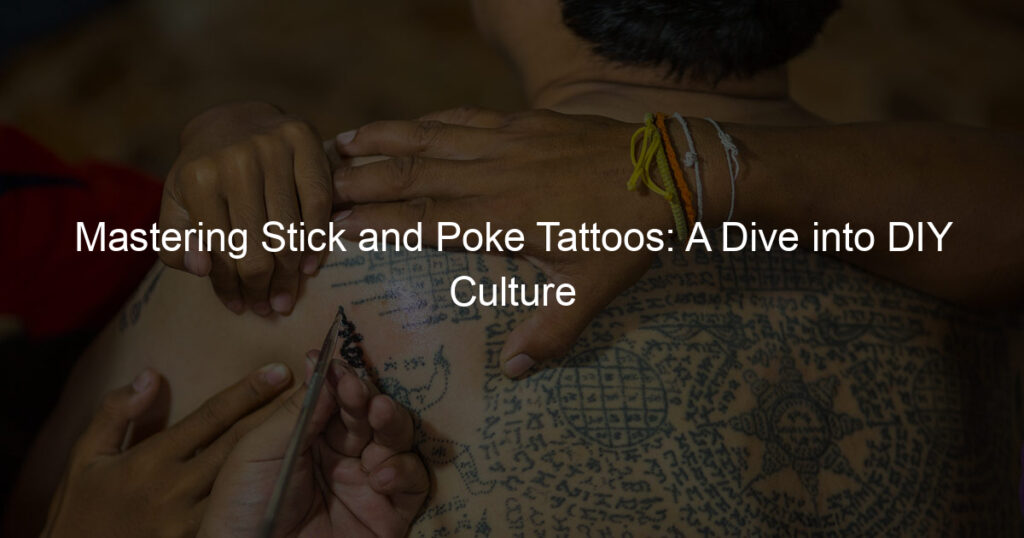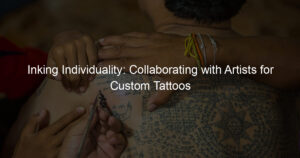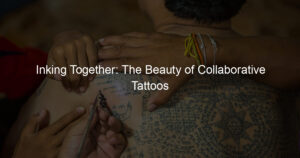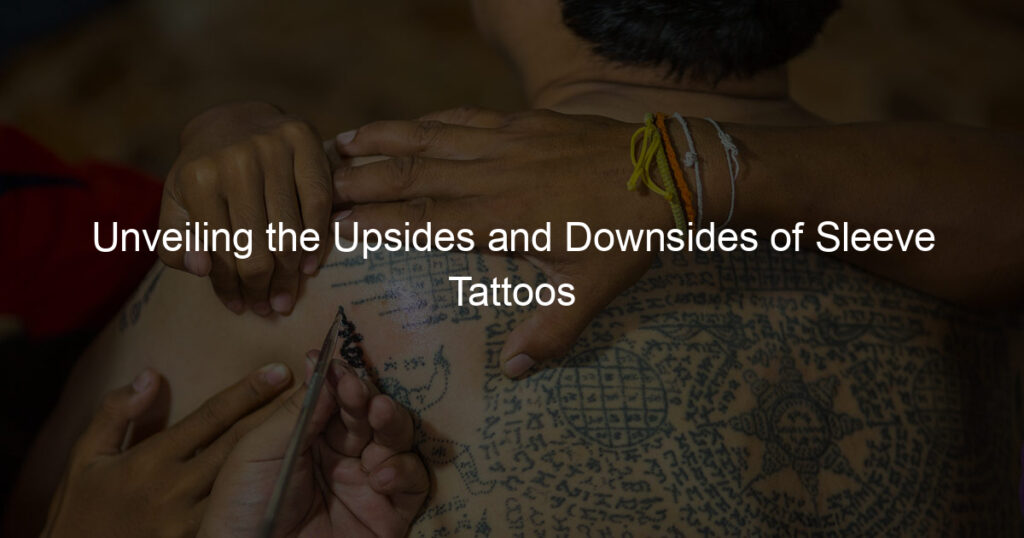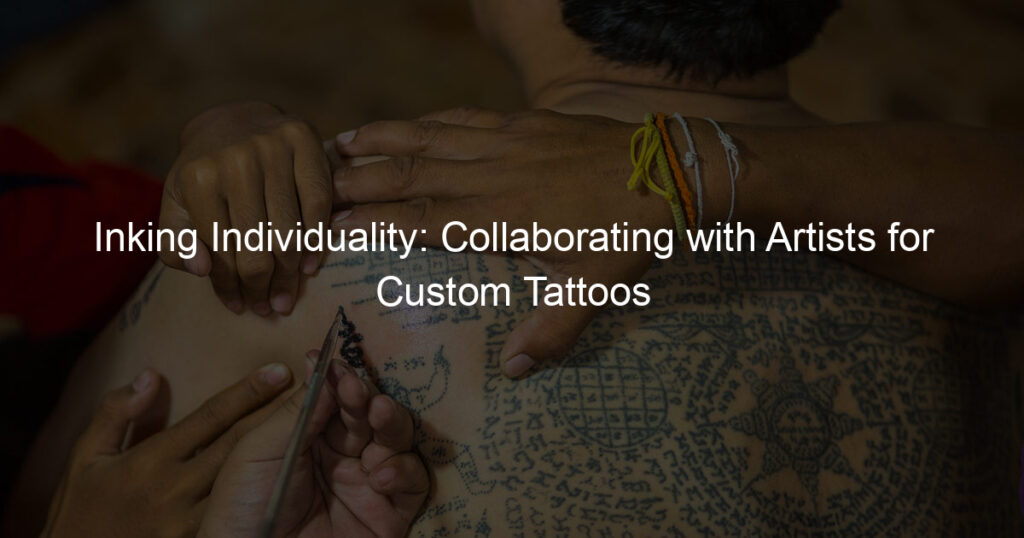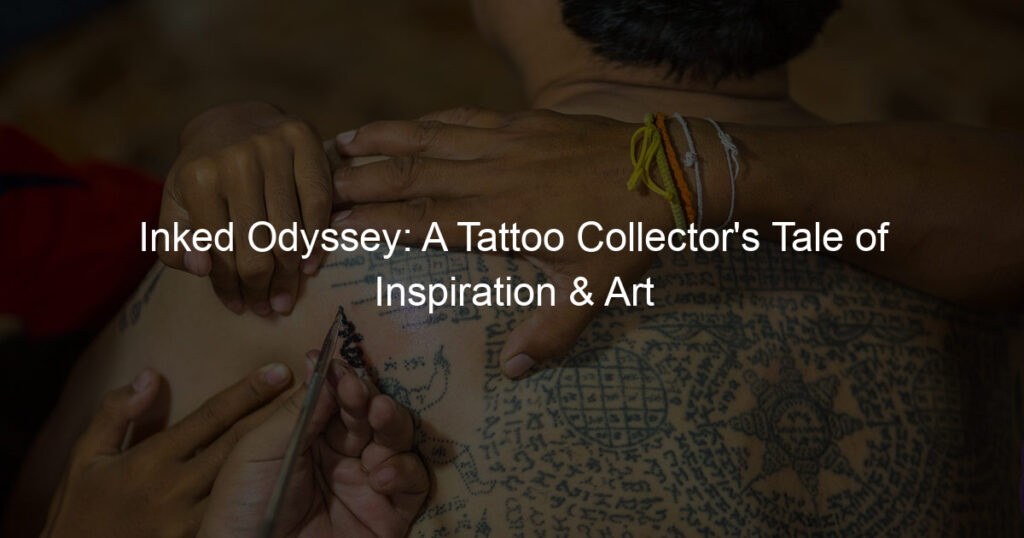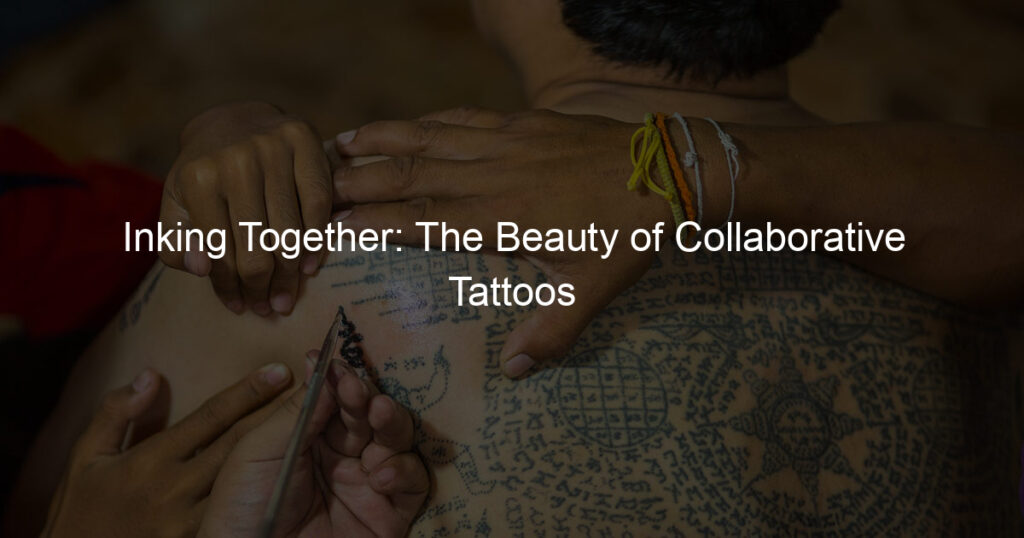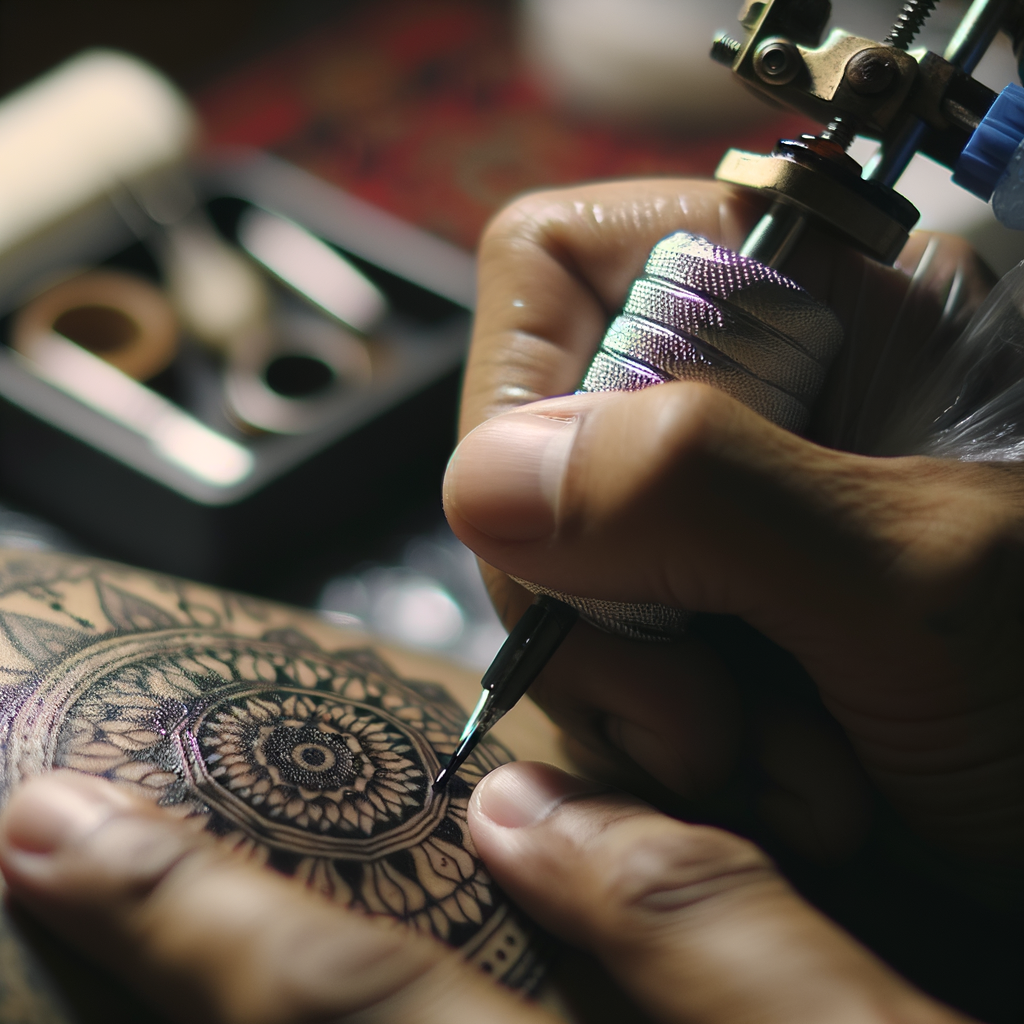
Introduction to DIY Stick and Poke Tattoos
Stick and poke tattoos, also known as DIY tattoos, have been gaining popularity in recent years. This blog post will take you on a journey through the history and definition of stick and poke tattoos, and explore the reasons behind the growing DIY tattoo culture.
Stick and poke tattoos, as the name suggests, involve using a sharp point and ink to create a design on the skin. This method of tattooing has been around for centuries, with historical evidence dating back to ancient cultures. It was a simple and accessible way for people to express themselves through body art.
Historically, these tattoos were often associated with tribal cultures, where they were used as a form of identification or to symbolize a person’s status or achievements. Over time, the practice has evolved and spread across the world, becoming a popular form of self-expression in modern culture.
The DIY tattoo culture has seen a significant surge in popularity in recent years. There are several reasons for this growth. For one, DIY tattoos offer a sense of personalization and uniqueness that is not always possible with professional tattoos. They allow individuals to create their own designs and apply them in their own time and space, adding a personal touch to the process.
Additionally, DIY tattoos are often seen as a more affordable option compared to professional tattoos. They require minimal equipment and can be done at home, making them accessible to a wider audience. Lastly, the DIY tattoo culture promotes a sense of community, with people sharing their designs and experiences online, fostering a sense of camaraderie and shared creativity.
In the following sections, we will delve deeper into the art of stick and poke tattoos, providing insights into how to get started with DIY tattoo art, advanced techniques, and the future of this fascinating culture.
Understanding the Art of Stick and Poke Tattoos
Stick and poke tattoos, also known as DIY tattoos, have been a part of human culture for thousands of years. Let’s delve into the traditional art of these tattoos and understand their origins and techniques.
Traditional Stick and Poke Tattoos
Traditional stick and poke tattoos have a rich history and cultural significance. They were not just a form of body art, but also a medium of storytelling and identity expression.
-
- Origins and cultural significance
Stick and poke tattoos originated in ancient cultures around the world. From the indigenous tribes of the Philippines to the Maori people of New Zealand, these tattoos were used to signify status, achievements, and tribal affiliations. They were also believed to provide protection and spiritual guidance.
-
- Traditional techniques and tools
The traditional method of stick and poke tattooing is quite simple but requires skill. The artist uses a sharp point, usually a needle or bone, dipped in ink. The point is then repeatedly poked into the skin, creating a series of dots that form a design. The tools used were often made from natural materials, such as animal bones, shells, or plant thorns.
Understanding the origins and traditional techniques of stick and poke tattoos helps us appreciate the art form’s depth and richness. It also provides a foundation for those interested in exploring this ancient practice in a modern context.
Modern Stick and Poke Tattoo Art
As we journey further into the world of Stick and Poke tattoos, we find ourselves in the realm of modern artistry. This form of tattooing has evolved significantly over the years, with artists now using advanced techniques and tools to create intricate designs. Let’s delve into the evolution of this art form, explore the modern techniques and tools used, and highlight some notable artists who are making waves in the industry.
-
- Evolution of the Art Form
Stick and Poke tattooing has come a long way from its traditional roots. Once a simple art form with basic designs, it has now evolved into a sophisticated medium for self-expression. Today’s artists are pushing the boundaries of what can be achieved with a needle and ink, creating intricate designs that were unimaginable in the past. This evolution has been driven by a combination of artistic innovation and technological advancement.
-
- Modern Techniques and Tools
In the modern era, Stick and Poke artists have a variety of tools at their disposal. The basic needle and ink have been upgraded with precision needles, high-quality inks, and sterilization equipment. These advancements allow for more detailed and safer tattoos. Techniques have also evolved, with artists now able to create a range of effects, from fine lines to shaded areas, all with a single needle.
-
- Case Study: Notable Modern Stick and Poke Artists
There are many talented artists who are pushing the boundaries of Stick and Poke tattoo art. Let’s take a look at a few:
| Artist | Style | Notable Work |
|---|---|---|
| Grace Neutral | Abstract and surreal | Known for her unique, otherworldly designs |
| Tea Leigh | Minimalist and delicate | Renowned for her intricate, fine-line work |
| Indy Voet | Geometric and bold | Famous for his striking, symmetrical designs |
These artists, among many others, are redefining what is possible with Stick and Poke tattoos, proving that this ancient art form is still as relevant and exciting as ever.
Getting Started with DIY Tattoo Art
Embarking on your journey into the world of DIY tattoo art can be exciting and rewarding. However, it’s important to be well-prepared and informed before you start. This section will guide you through the essential materials you’ll need and the safety considerations to keep in mind.
Materials Needed for Homemade Tattoos
Creating your own tattoos at home requires some specific tools and materials. Let’s take a look at what you’ll need:
-
- Essential tools and materials:
Firstly, you’ll need a tattoo needle or a sewing needle, tattoo ink, and a clean cloth. A pencil and paper for sketching your design are also essential. Additionally, you’ll need a container for the ink and disposable gloves to maintain hygiene.
-
- Safety considerations and hygiene:
When it comes to DIY tattoo art, safety should be your top priority. Always use new, sterile needles and high-quality, non-toxic tattoo ink. It’s also crucial to clean the area of skin you plan to tattoo thoroughly before starting. Remember, never share your tattoo equipment with others as it can lead to the spread of infections.
Now that you know what materials you need and the safety measures to take, you’re one step closer to creating your own DIY tattoo art. In the next section, we’ll delve into the basic techniques of stick and poke tattoos.
Basic Stick and Poke Tattoo Techniques
Creating your own stick and poke tattoo can be a rewarding experience. However, it’s important to follow the right techniques to ensure a safe and successful tattooing process. In this section, we’ll guide you through the basic steps and highlight some common mistakes to avoid.
-
- Step-by-step guide to your first Stick and Poke Tattoo
Here’s a simple guide to help you create your first stick and poke tattoo:
| Step | Description |
|---|---|
| 1 | Choose your design and location. Keep it simple for your first tattoo. |
| 2 | Clean the area thoroughly with alcohol wipes to prevent infection. |
| 3 | Use a stencil to draw your design on the skin. This will serve as your guide. |
| 4 | Dip the needle in ink and poke it into your skin. Don’t go too deep – just enough to get the ink in. |
| 5 | Wipe away excess ink and repeat the process until your design is complete. |
| 6 | Clean the tattoo and apply a thin layer of aftercare cream. |
-
- Common mistakes and how to avoid them
When creating a stick and poke tattoo, there are a few common mistakes that beginners often make. Here are some tips to avoid them:
-
- Going too deep: This can cause unnecessary pain and increase the risk of infection. The needle should only penetrate the top layers of the skin.
- Using the wrong ink: Always use tattoo ink. Other types of ink can be harmful to your skin.
- Not cleaning the area: Hygiene is crucial when tattooing. Always clean the area before and after the process.
- Rushing the process: Stick and poke tattoos take time. Don’t rush the process, take your time to ensure a good result.
Advanced Techniques in Stick and Poke Tattoo Culture
As you continue to explore the fascinating world of stick and poke tattoos, it’s time to dive deeper into the advanced techniques that can take your handmade tattoo art to the next level. These techniques are all about adding depth, dimension, and color to your designs.
Mastering Shading and Color in Handmade Tattoos
Shading and color are two essential elements in creating visually appealing and realistic tattoos. Let’s explore some techniques and tips to master these aspects.
-
- Techniques for adding depth and dimension
Adding depth and dimension to your stick and poke tattoos can make them look more realistic and visually appealing. Here are a few techniques to achieve this:
1. Layering: By layering your dots, you can create a sense of depth and dimension. Start with a light layer of dots and gradually add more layers to create darker areas.
2. Shading: Shading is a technique where you use different shades of ink to create a 3D effect. You can use a darker shade for the areas that are supposed to be in shadow and a lighter shade for the areas that are supposed to be in light.
-
- Using color effectively
Color can add a whole new dimension to your stick and poke tattoos. Here are a few tips on using color effectively:
1. Choose your colors wisely: The colors you choose can significantly impact the overall look of your tattoo. It’s essential to select colors that complement each other and the skin tone of the person getting the tattoo.
2. Understand color theory: Understanding color theory can help you create more visually appealing designs. For instance, colors that are opposite each other on the color wheel can create a vibrant look when used together, while colors that are next to each other can create a more harmonious look.
Mastering these advanced techniques will not only enhance your stick and poke tattoo designs but also elevate your status as a DIY tattoo artist. Remember, practice makes perfect, so keep experimenting with different techniques and colors until you find what works best for you.
Creating Complex Designs in DIY Tattoo Art
Creating complex designs in DIY tattoo art can be a challenging yet rewarding process. It requires careful planning and execution, but the results can be truly stunning. Let’s delve into how to plan and execute complex designs and explore some case studies of complex stick and poke designs and their creators.
- Planning and executing complex designs
When it comes to planning and executing complex designs, it’s all about patience and precision. Start by sketching your design on paper. This will help you visualize your design and make any necessary adjustments before you start tattooing. Once you’re happy with your design, transfer it onto your skin using a stencil. This will serve as your guide during the tattooing process.
Execution is the next step. Start by outlining your design with a fine needle. Then, fill in the details using a combination of dot work and line work. Remember, stick and poke tattoos are all about building up layers of ink, so take your time and be patient. It’s better to go slow and get it right than to rush and make mistakes.
- Case study: Complex Stick and Poke designs and their creators
There are many talented artists who have mastered the art of creating complex stick and poke designs. One such artist is Sarah March, who has been creating intricate stick and poke tattoos for over a decade. Her designs, which often feature intricate geometric patterns and detailed animal motifs, are a testament to her skill and creativity.
Another notable artist is Oliver Kenton, who is known for his intricate dot work designs. His tattoos, which often feature complex geometric patterns and intricate mandalas, are a testament to his patience and precision.
These artists and many others like them serve as an inspiration for those looking to create complex designs in DIY tattoo art. They prove that with patience, precision, and a lot of practice, it’s possible to create stunning, complex designs using the stick and poke method.
In conclusion, creating complex designs in DIY tattoo art is a challenging yet rewarding process. It requires careful planning and execution, but with patience, precision, and practice, you can create stunning, intricate designs that are truly unique.
Conclusion: The Future of DIY Tattoo Culture
As we draw to a close, it’s important to reflect on the current state of the DIY tattoo culture and make some predictions about its future. The world of Stick and Poke Tattoo Art is evolving, and with it, the DIY Tattoo Culture is set to experience some significant changes.
-
- Current trends in Stick and Poke Tattoo Art
Stick and Poke Tattoo Art has seen a surge in popularity in recent years. This form of tattooing, which involves using a single needle to manually insert ink into the skin, is being embraced by a growing number of people. They appreciate its simplicity, affordability, and the unique, handcrafted aesthetic it offers. The trend is also being driven by a desire for personal expression and the ability to create art on one’s own body.
-
- Predictions for the future of the DIY Tattoo Culture
Looking ahead, the DIY Tattoo Culture is likely to continue its upward trajectory. As more people become aware of the possibilities of Stick and Poke Tattoo Art, the culture will continue to grow and evolve. We can expect to see more resources and tools being developed to support this art form, making it even more accessible to beginners. Furthermore, as the culture grows, we may see a shift in societal attitudes towards tattoos, with more acceptance and understanding of this form of self-expression.
In conclusion, the future of DIY Tattoo Culture is bright. It’s an exciting time to be part of this movement, as we watch it grow and evolve. Whether you’re a seasoned tattoo artist or a curious beginner, there’s no better time to dive into the world of Stick and Poke Tattoo Art.

